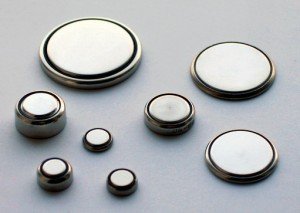Usually battery ingestion cases involve swallowing button batteries that are tiny and round, often used in hearing aids and watches. This poison emergency is covered in St Mark James first aid and CPR training. The material posted on this page is for information purposes. To learn more enrol in a class.
Children usually swallow button batteries or push them up their nose.
Button batteries are often found in:
- Watches
- Calculators
- Cameras
- Hearing aids
- Penlights
Symptoms of battery ingestion
Swallowing button batteries may not produce any symptoms, but if the battery is not passed out or stuck in the esophagus or stomach, the following symptoms may result:
- Metallic taste
- Abdominal pain
- Chest pain
- Nausea
- Vomiting–may contain blood
- Bloody stool
- Shock
- Gastrointestinal inflammation
Some of the symptoms of putting a battery up the nose include:
- Cough
- Breathing difficulty
- Pneumonia
- Respiratory failure
Treatment
Call emergency medical help immediately
- Call 911 or take the casualty to a local emergency department immediately
- Take the matching battery or battery packaging with you to the hospital, if possible
- An X-ray will be done promptly
Caution
- Do NOT try to induce vomiting to get the battery out
- Do NOT give the casualty anything to eat or drink until the doctor allows you to do so
If the X-ray shows that the battery is stuck in the esophagus, an endoscope will be used to remove it.
If it is in the stomach, medical treatment may not be required unless the casualty shows symptoms such as fever, vomiting, abdominal pain or bloody stools.
Learn More
To learn more about helping and managing victims of battery ingestion and other poison emergencies enrol in a St Mark James course today (click here for more details).
